The P1Sim Mistral in a nutshell
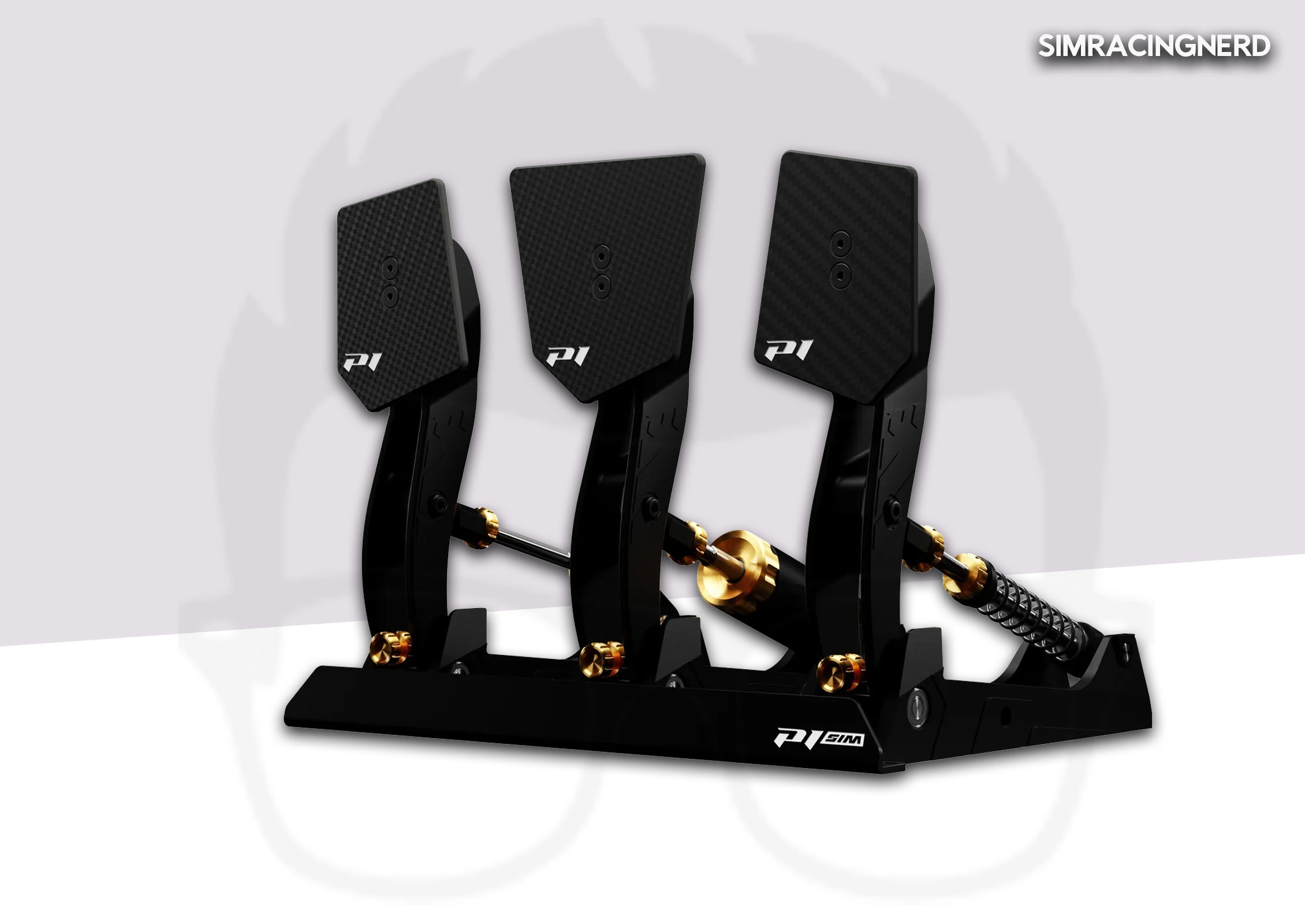
Advantages & Disadvantages
✅ Available with 2 or 3 pedals
✅ Excellent racing feedback
✅ Haptic feedback on throttle and brake
✅ Fully adjustable pedals (hardware and software)
❌ A haptic feedback that makes a bit of noise
❌ Doesn’t really fit all cockpits when taking the base plate
There’s no better time to set up a rig sim-racing, especially with all the equipment and other products available. What’s more, many brands offer peripherals in bundles, so you can get more or less what you need in a single box, and in custom form in some cases.
Fans of virtual car racing are all familiar with brands such as Fanatec, Moza, Simagic or Asetek SimSports. These players operate in the premium segment, with Fanatec and Moza also offering budget-friendly solutions. The high-end, or as I like to call it “very premium”, is dominated by names like Heusinkveld or Simucube. These two brands offer products that are often derived from those used in racing cars and offered to professional drivers.
However, a new brand, and a French one at that, made its sim-racing debut barely 2 years ago. It’s P1Sim, and among the products it offers is the Mistral pedalboard in Load Cell. In what follows, we take a closer look at this device.
Main features and technical specifications of the crankset
- All-metal construction, from the pedal plate to the frame, including all resistance systems (gas pedal, brake and clutch)
- Load Cell on brake with 200 kg resistance
- HALL sensor on gas pedal
- All aspects of the pedals can be adjusted
- PC and Simhub compatible by adding a plug-in
- Available in a range of colors for crankset components
- Haptic feedback on brake and gas pedal
- Individual pedals for any position on a chassis, and possibility of mounting on a plate sold by P1SIM.
P1Sim Mistral design
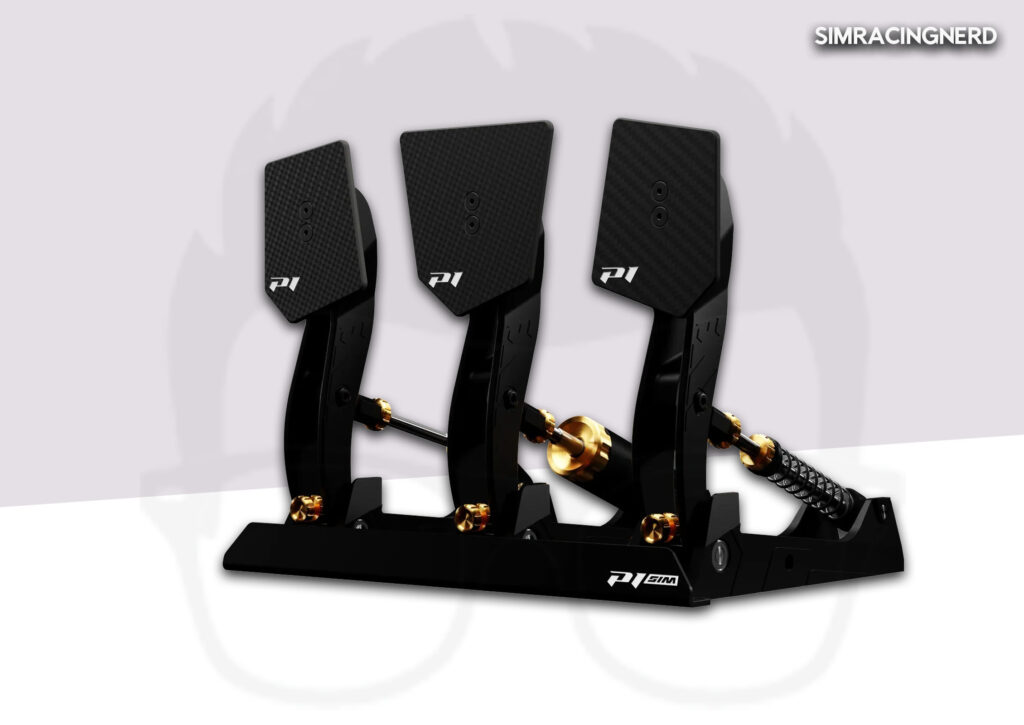
As far as I’m concerned, the beauty of a product lies in its simplicity. The more sober the sim-racing device, the more elegant it is. And this is the case with the Mistral. The Mistral is available in three colors: matte black, glossy black and glossy black with white pedals.
Each pedal is individual, all attached to some kind of bracket at the front. The color of the resistance system elements is customizable, and from memory, there aren’t many pedalboards that do this. You can choose from 8 colors to suit your preferences, making for a truly custom product. The three pedals are virtually identical, with the only notable difference being the pedal plates.
All in all, the Mistral looks really good, and my hat’s off to the design team for getting it right the first time.
Customized assembly
As I just mentioned, the Mistral’s pedals are independent, allowing you to mount them on a chassis as you see fit. The manufacturer offers a base plate for attaching the pedals to a cockpit or stand.
The hardware is available with the crankset, but not the tooling, which is a bit of a shame, given that an Allen key costs next to nothing these days. But then, the company is still young, and I hope they’ll be able to add this feature in the future to make pedal assembly easier.
Speaking of mounting, this peripheral easily attaches to any sim-racing chassis thanks to fairly standard holes. However, if you opt for the base plate and don’t have an aluminum profile chassis, chances are the holes won’t line up, forcing you to drill new ones.
Crankset manufacture and finishing
The Mistral is made entirely of metal, from the baseplate, to the resistance system, to the pedals themselves. It’s very premium, and the manufacturer emphasizes this on the product description page. What’s more, this pedalboard is hand-assembled, giving it a luxurious, Bentley-like touch.
All parts are machined to perfection, most certainly with CNC machines. I didn’t find any sharp edges, burrs or defects on this product, and that says a lot about the build quality.
As for the finish, the paintwork is just perfect on all the parts making up this crankset. It has to be said that I’d expect nothing less from a product that costs quite a bit, and I’ll come back to that below.
Pedal settings
The Mistral’s adjustability is very comprehensive, largely due to the fact that each pedal is individually designed. You can adjust pedal angle, spring hardness, elastomer resistance, spacing, tilt, pedal plate height, dead zone, and more or less anything else you want with it.
What’s more, the Mistral is compatible with Simhub via the installation of a plugin in the software. This offers you software settings for pedal saturation, haptic feedback intensity, Hall sensor sensitivity, etc. The only pedal that doesn’t offer much adjustment, notably on its resistance system, is the clutch pedal. This is operated in two stages, and offers a default setting on the spring. Either you like it or you don’t. As far as I’m concerned, this pedal proved to be just right for simulation use.
Sensations during play
Let’s move on to the feel of this brand-new Mistral crankset. You’ll just need a little time to find the right brake elastomer among those available with the crankset. Racing on AC or ACC, you’ll quickly find your bearings with the right settings, whether hardware or software. The brake pedal is firm, offering little travel once the Load Cell is reached. In other words: it’s pure joy to use in sim-racing, whatever the title you’re looking at.
I was really surprised by the Mistral’s ability to adapt to any situation, and especially any sim-racing car. Between proto, GT3, F1 and sports cars, this pedalboard proved to be a real Swiss Army knife, perfect in almost any situation.
However, it’s missing just one or two things to make it the pedalboard of your dreams. As far as I’m concerned, the lack of adjustment on the clutch pedal is a bit penalizing, especially on its resistance mechanism. And also, the haptic feedback is a little too noisy for my taste, in addition to the sensations which are not often reproduced to perfection. But let’s not forget that this is the brand’s first crankset, and there’s still work to be done on certain details.
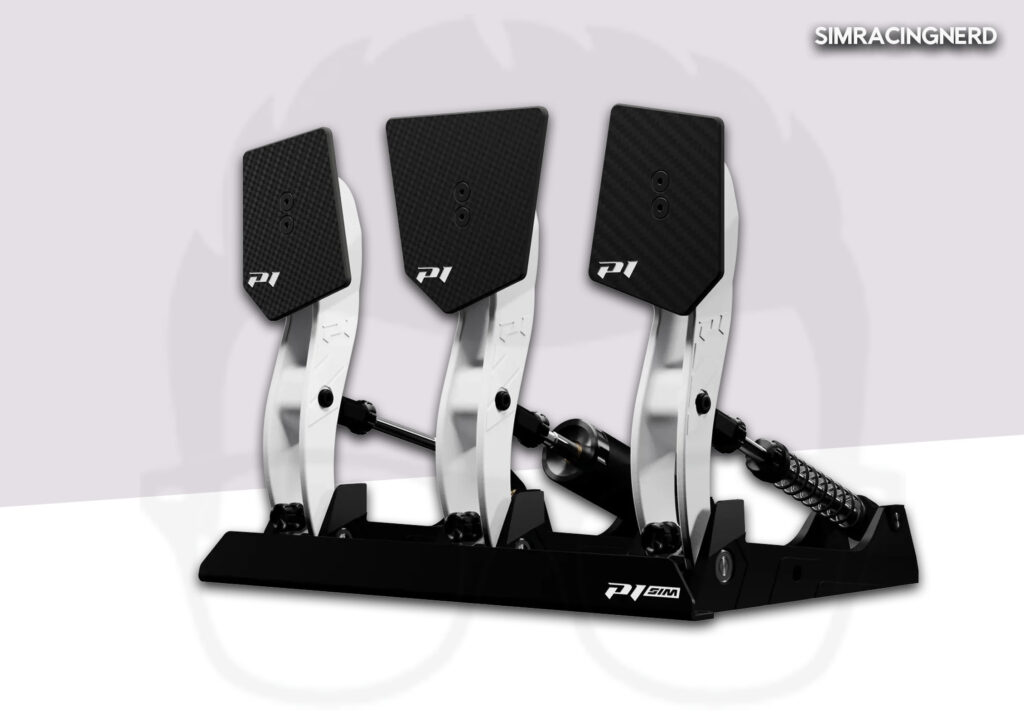
Mistral crankset compatibility
I don’t really need to tell you that this pedalboard is only compatible with the PC and Windows platform. It’s a bit of a shame for console gamers, but this choice is perfectly understandable for two reasons: the brand doesn’t have a Direct Drive base, and console manufacturers certainly won’t collaborate with such a young brand.
As for sim-racing titles, I’ve been able to try out the Mistral on several, including AC and ACC, and haven’t encountered any problems with it at all. This pedalboard is supported without any bugs or strange behavior on the game.
Value for money
In its 2-pedal version, the Mistral costs €649. And if you take the clutch pedal, add €250, for a total of €899. You’ll also find other accessories in the P1Sim store, such as a Base Plate and heel rests, which cost €69 and €99 respectively. For the sensations provided and the build quality, I’d say the Mistral’s value for money is very good, especially coming from a small manufacturer just getting into the race.
My verdict on the P1Sim Mistral crankset
I’ve really fallen under the spell of P1Sim’s Mistral. Combining elegance, premium, build quality and excellent feel, it’s a crankset that has everything to please and seduce virtual riders.
It has its little faults, such as the haptic feedback, which is not very precise and a little noisy, the lack of adjustment on the clutch pedal resistance and a Base Plate that doesn’t adapt very well to all cockpits, but that’s also the case with practically all other cranksets: they all have faults. Nothing on this earth is perfect, but P1Sim’s Mistral comes very close.

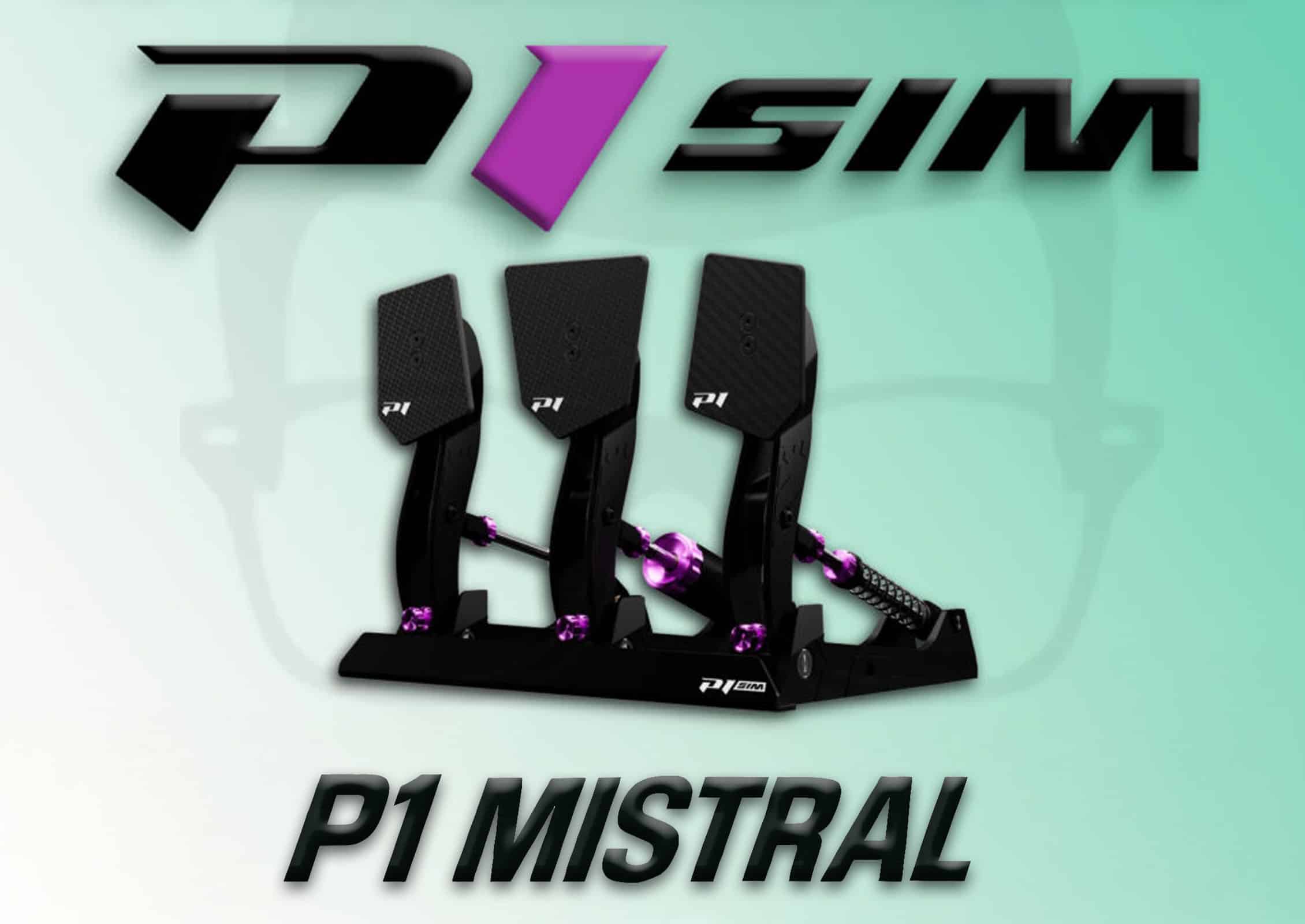


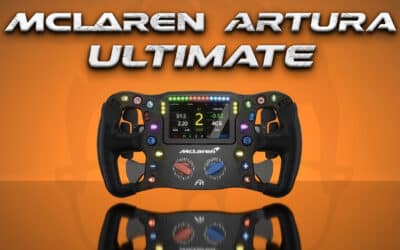


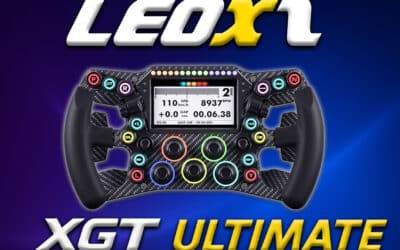
0 Comments